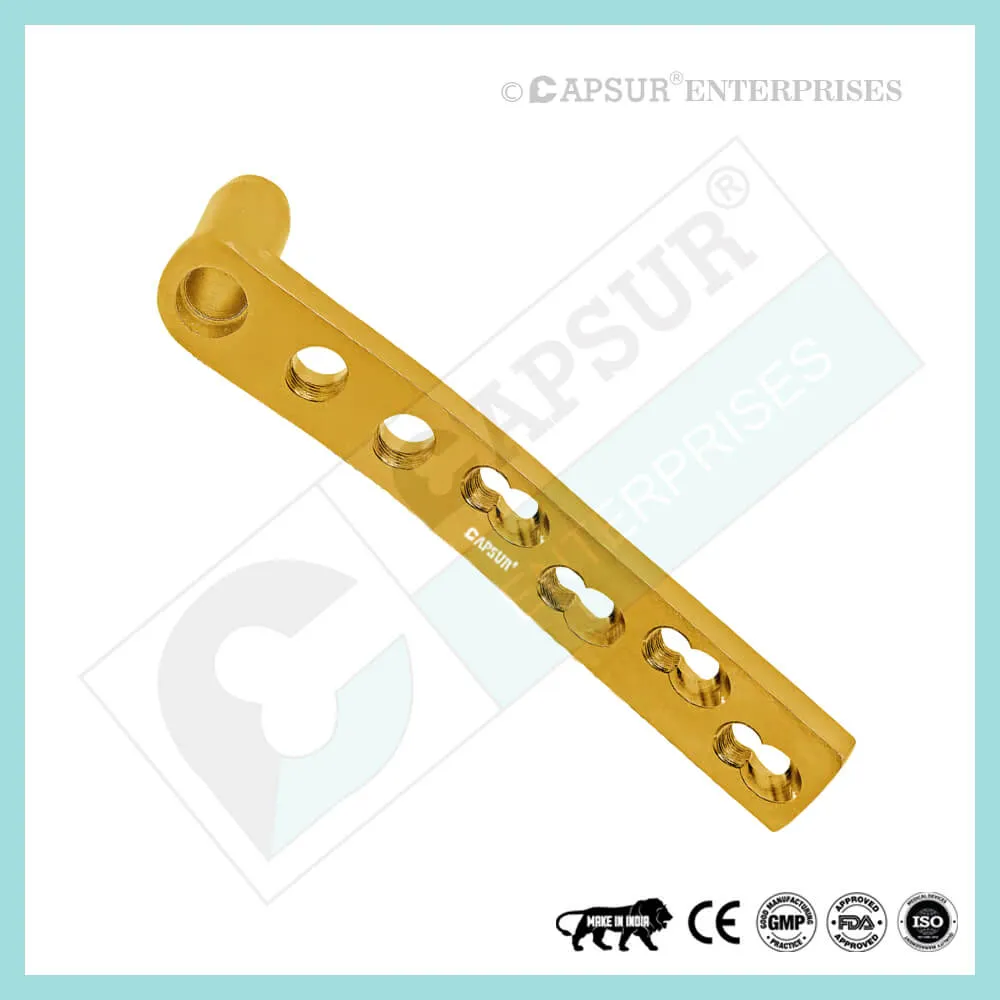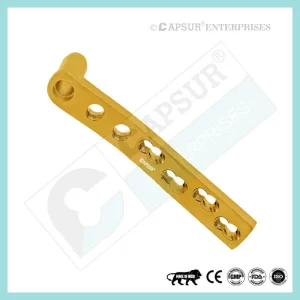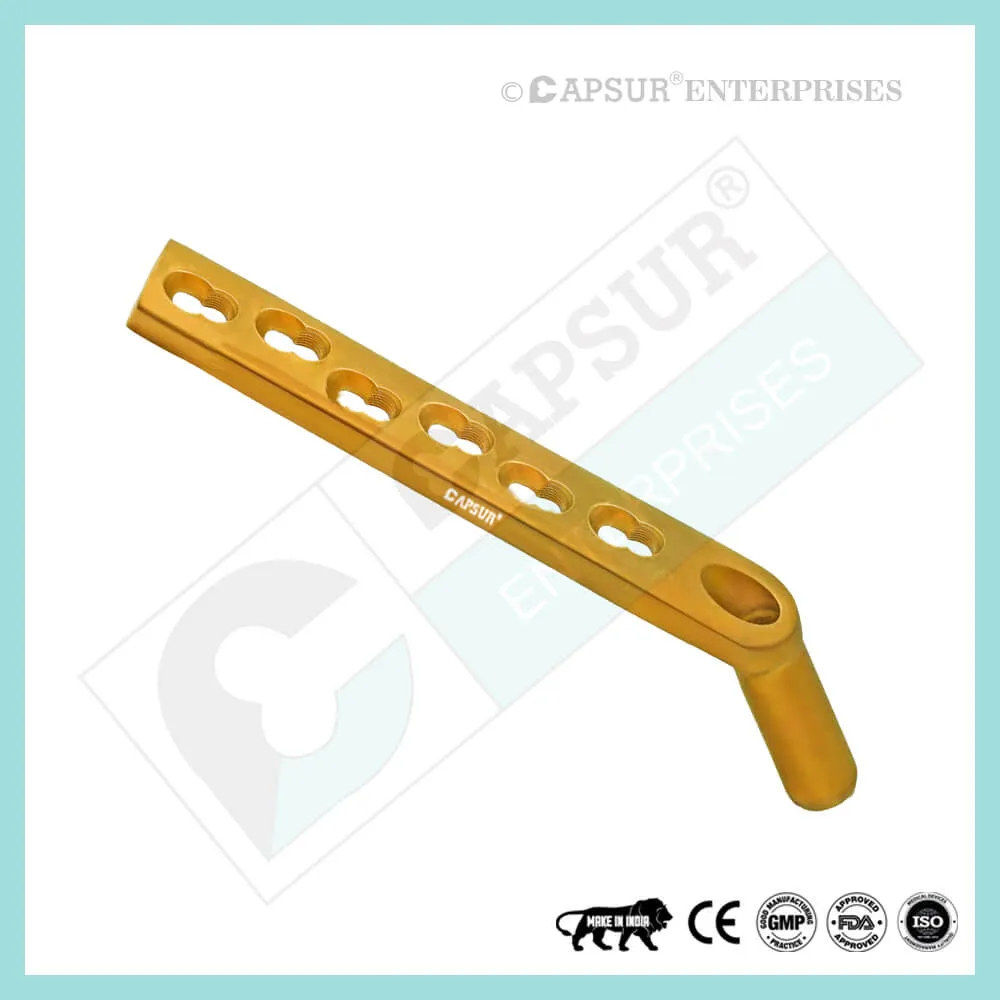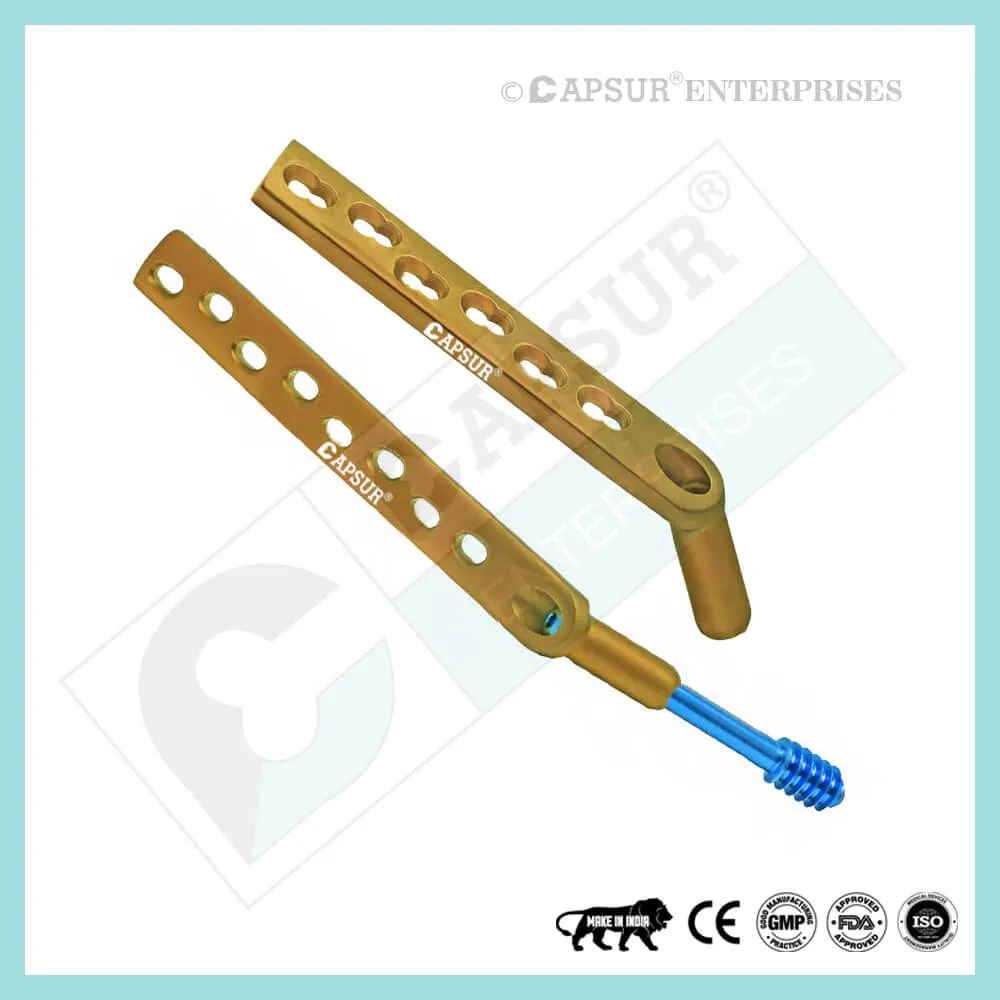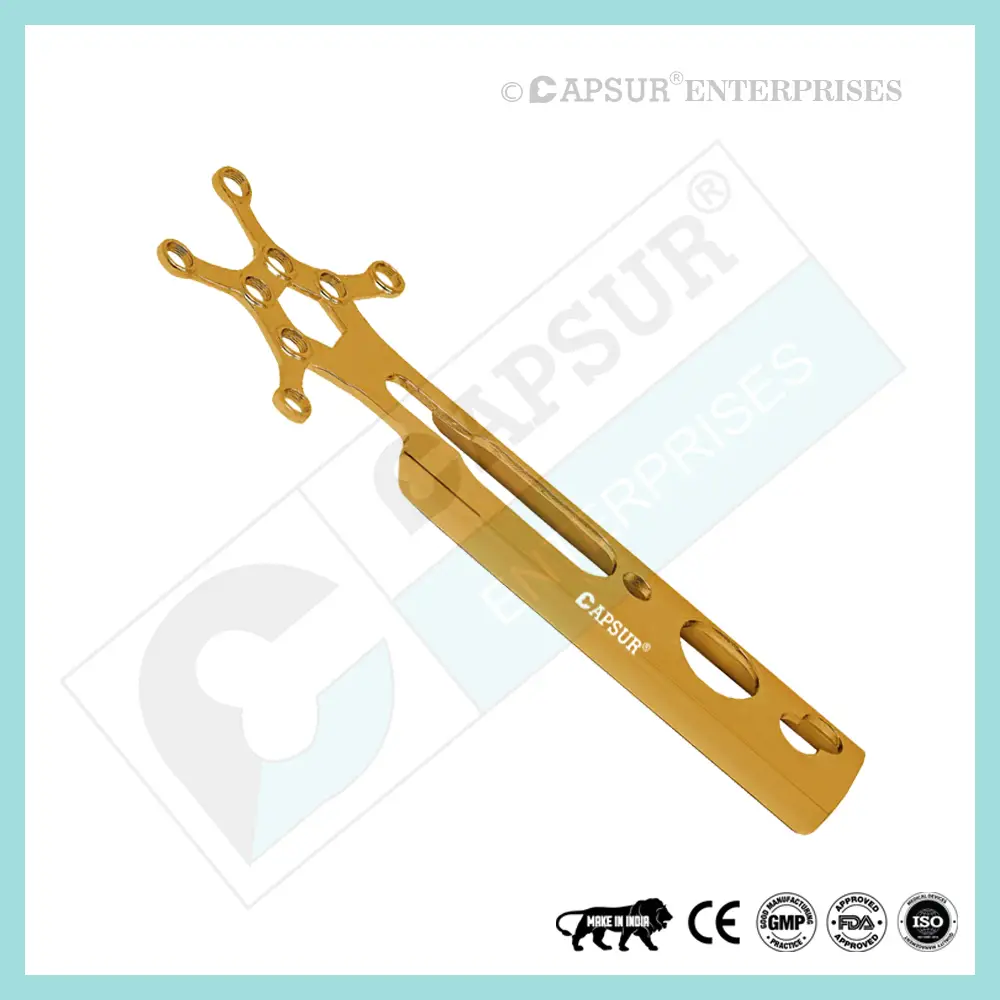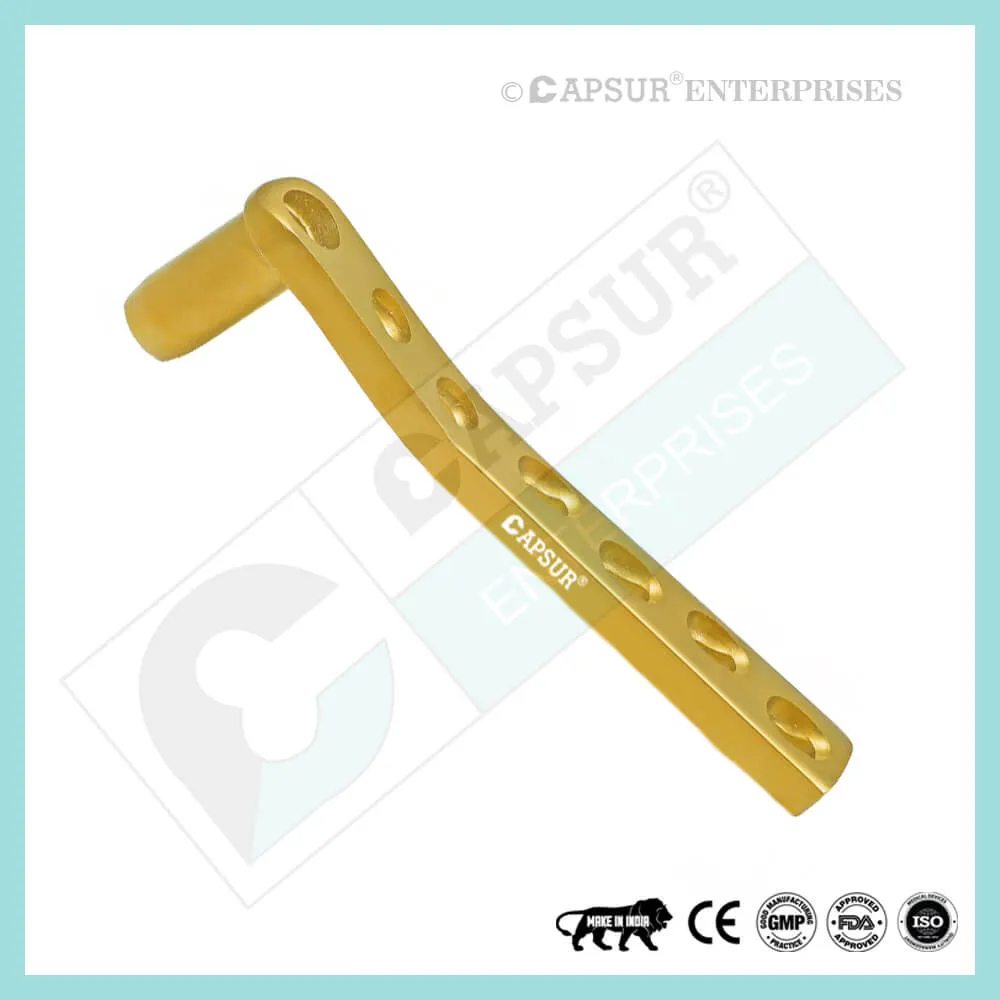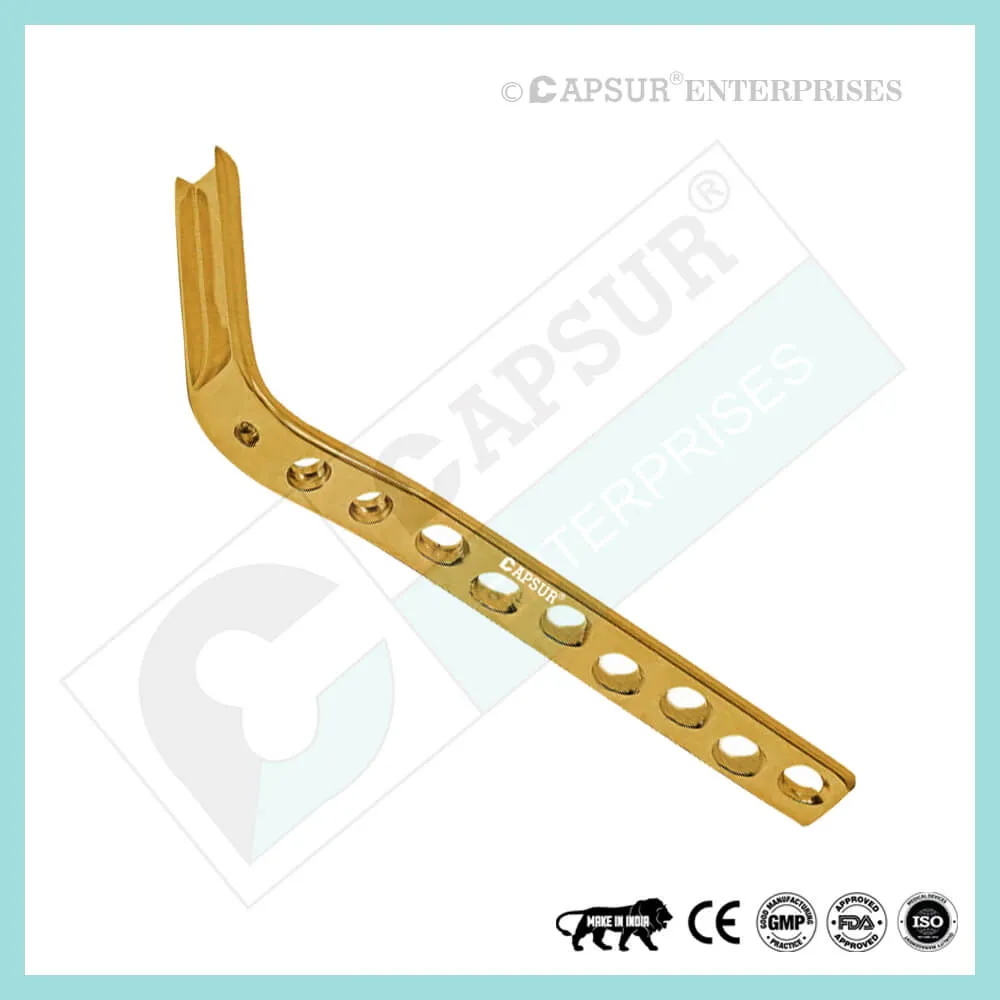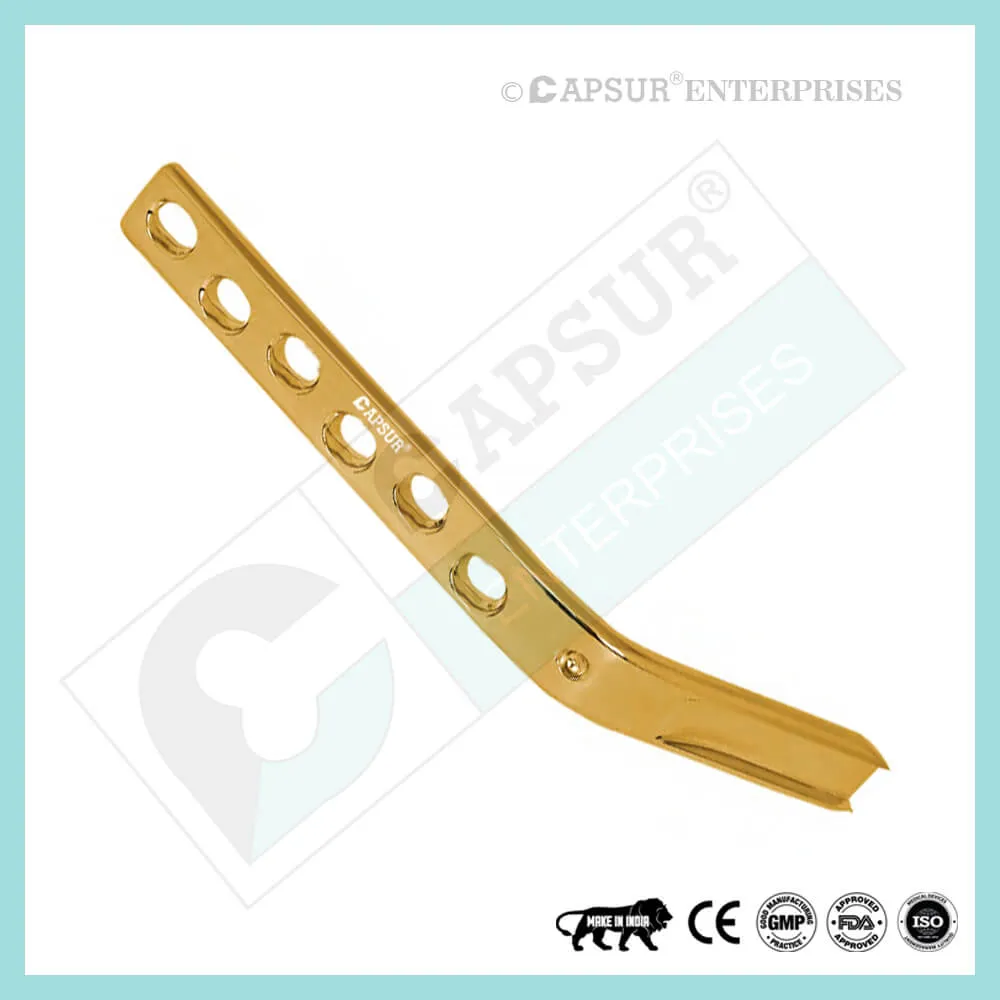Model No:
- Best Quality
- Affordable Pricing
- On-Time Delivery
- Customer Satisfaction
Specification for Locking DCS Plate 95 Degree
- 316L stainless steel and titanium are used to make Locking Dynamic Condylar Screw Plate.
- With 6, 7, 8, 10, 12, 14, 16, 18, and 20 holes, the Dynamic Condylar Screw Plate can be used in a variety of clinical settings.
- Without sacrificing the strength of the plate, the number of screw holes per length is maximized. As a result, a smaller incision can accommodate more fixation points.
- In the two holes that are closest to the barrel, 6.5 mm cancellous bone screws can be used. As a result, it is possible to fixate the most proximal subtrochanteric fracture fragments or the most distal condylar fracture fragments, increasing stability.
- Screw holes in the DCS side plate allow for the axial compression of a shaft fracture and the angulation of 4.5 mm cortex screws.
- Lag screws come in lengths ranging from 50 mm to 145 mm. Only one size of compression screw is required; it can be used for additional compression.
- The lag screw cannot rotate inside the plate barrel because there are two flats there that match the two flats on the lag screw. Additionally, inserting the plate over the lag screw is made simpler by the two-flat design.
- Due to the low profile of the plates, there is less chance of subtrochanteric fractures and distal femoral fractures caused by trochanteric bursitis.
- During the procedure, the Locking Dynamic Condylar Screw Plate instruments also offer direct measurements, enabling proper reaming, tapping, and lag screw insertion depth. Over-reaming is prevented with the triple reamer’s built-in stop and locking nut.
- The plate can be used with a variety of general instruments, including a plate bending press, plate holding forceps, plate bending pliers, bone holding forceps, bone elevators, a bone cutter, a bone nibbler, a depth gauge, a sleeve, a screwdriver, a trocar sleeve, etc.
Uses of Locking DCS Plate 95 Degree
- Uses for Dynamic Locking Condylar Screw Plate
- The following proximal distal fractures are recommended for the Dynamic Locking Condylar Screw Plate:
- Broken intercondyles
- Broken supracondylar bones
- fractures of the unicondyle
- The following proximal femur fractures are recommended for the Dynamic Locking Condylar Screw Plate:
- fractures of the transverse subrochanteric bones
- Oblique subtrochanteric fractures that are short
- fractures of the subtrochanteric long axis
Specifications
Product Video
Specifications
| Locking DCS Plate 95 Degree |
|---|
Product Video


